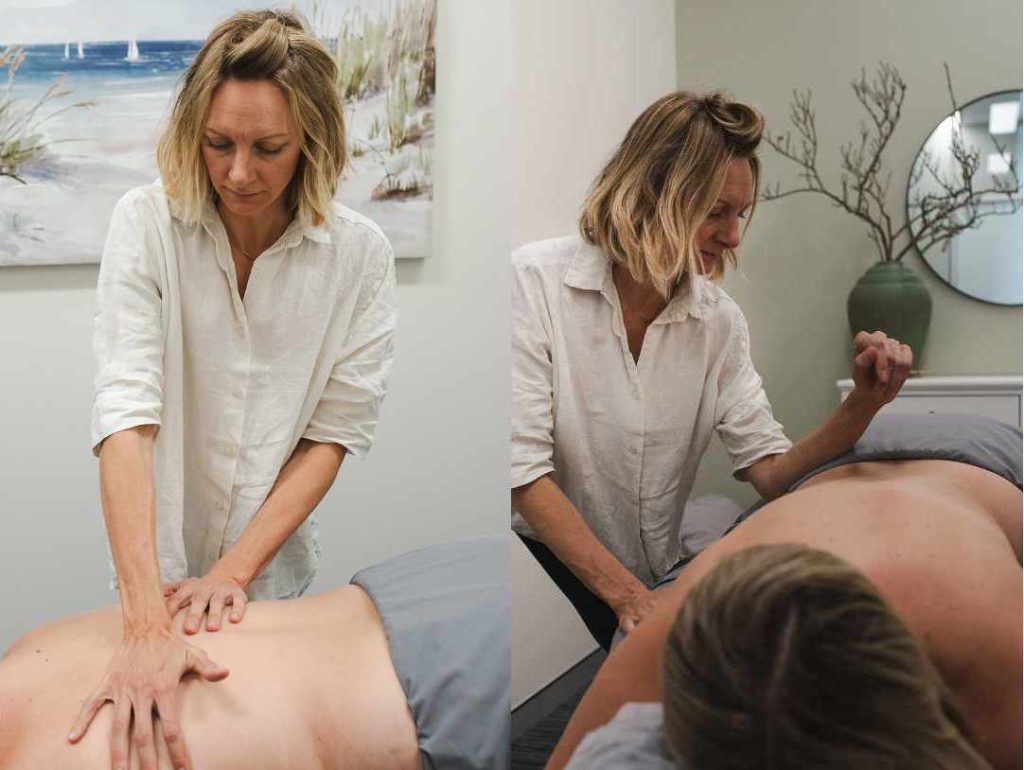How often do you get a massage? Do you use it to maintain good health, or do you wait until you have a problem before heading for the massage table? There are numerous health benefits which mean that it should be a regular part of your wellness routine.
I always knew the benefits of massage to support a healthy body and mind, but I was one of those people who waited until they had a problem before seeking expert help. The turning point for me was during my training for a marathon – I was in pain, on the verge of injury, desperate for a fix so I’d be in good shape to complete the race. I saw a variety of practitioners who helped me heal and run completely pain free.
While this taught me the power of effective treatments for injury management, the biggest takeaway was that if I’d maintained my health during my training, I may never have reached the point of injury. As a result, I now choose to prioritise massage as part of my standard wellness routine, along with exercise and good nutrition.
We all lead different lifestyles, from elite athletes through to sedentary desk workers, to busy parents, and the knock-on effects to our body will depend on what we spend most of our time doing.
Just because you’re fit and active doesn’t mean you won’t benefit from a massage. In fact, massage is a fantastic way to help muscle recovery after an intense training session or event. Spend a lot of time sitting at a desk? The likelihood is, your posture is suffering and you’re tightening up in areas you shouldn’t be.
Prioritising your health and wellbeing is a choice and massage is a fantastic therapy to support your wellbeing along with exercise and nutrition.
Here are our top five reason to get a massage:
1. Reduces stress and anxiety
Massage can promote relaxation. It increases the body’s levels of oxytocin and serotonin, which results in lowered stress levels. It can also lower your blood pressure and uplift your mood. The next time you’re feeling stressed or anxious, take some ‘me time’ and try a massage and see the positive effects it can bring.
2. Reduces pain and muscle tension
Pain and tension in the body can be debilitating. Not only can it impact physical activity, but it can have an impact on your mental wellbeing affecting mood, anxiety and sleep. Pain and tension don’t always go hand-in-hand – you could be experiencing one without the other. Massage works directly on the soft tissues of the body to relieve and release muscle tension. Along with this you’ll likely see a reduction in pain (if present), plus an increase in range of motion and flexibility.
3. Improves posture
Massage helps to open tight areas of the body to help bring back natural alignment and support healthy range of movement within the body. For example, a desk-based worker will spend a lot of time sitting down and common postural imbalances include rounding through the shoulders, forward head posture and shortening through the hip flexors. These things can all lead to a variety of body complaints including neck, shoulder and lower back pain. Massage will soften the body tissues and help to open any areas of tension. Along with a homecare plan of stretching the tight muscles, plus strengthening the opposing weak muscles, more natural alignment can be regained.
4. Assists in preparation and recovery for athletes
One of the direct benefits of massage for athletes is the increased blood and lymphatic circulation which helps the muscles recover faster through relieving muscle tension and reducing soreness brought on by intense exercise. Massage can help to prevent injury if used as part of training and recovery sessions, along with treating scar tissue from previous injuries to help bring back improved range of motion by breaking down scar tissue over time. As well as the physical benefits, athletes may also feel a deep state of relaxation, reduced anxiety and improved focus and attentiveness.
5. Supports injury management and rehabilitation
The recovery road to full health following an injury can be a long and painful process. The best approach is through good management and a rehabilitation program. This will likely include injury analysis and acute stage treatment, day-to-day management, massage and a self-treatment homecare plan. Remedial massage as part of this plan looks to work the soft tissues of the body that are specific to the cause, therefore having a therapeutic effect. Treatment will be tailored specifically to the individual’s condition and could incorporate various techniques including massage, stretching, joint mobilisation and scar tissue work. The issue may not be solved in one treatment but using massage as part of an ongoing plan can have huge benefits as part of ongoing management and rehabilitation.
***
At Central Coast Physiolates we offer remedial massage (which includes myofascial cupping, dry needling, sports massage, deep tissue and myofascial release), pregnancy massage, relaxation massage, lymphatic drainage and scar release. Our therapists are fully qualified and trained to the highest standards and each treatment is tailored to your individual needs. They will be able to recommend the best approach for you, plus offer support and aftercare following your treatment.

